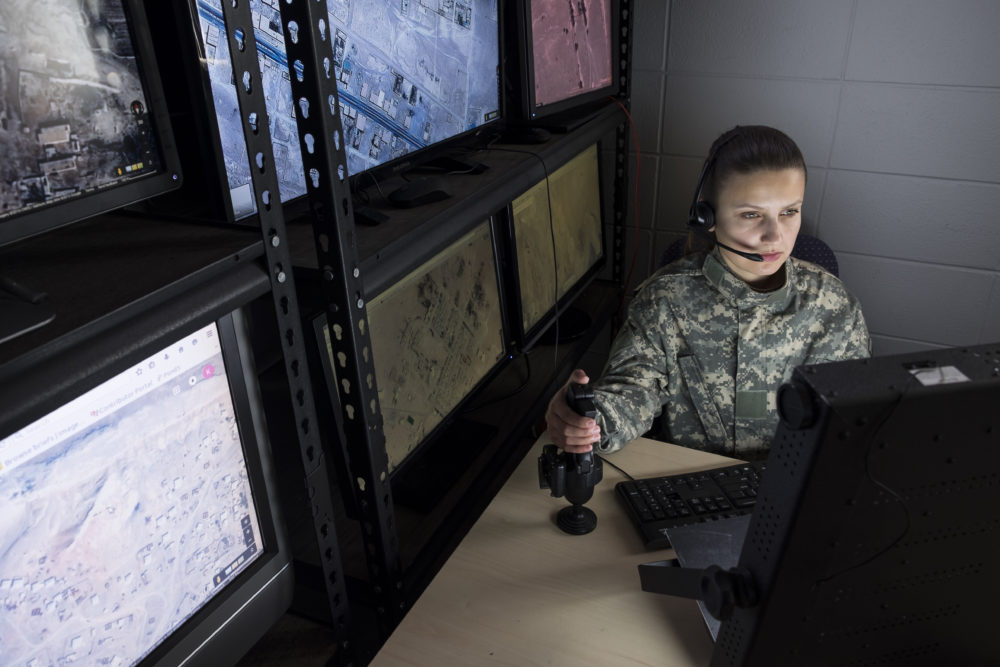Budgetary stability will go a long way toward realizing an integrated U.S. military satellite communications architecture that seamlessly blends government and commercial capabilities, according to industry leaders.
While the Department of Defense (DoD) and industry have made solid progress toward that long-sought goal in recent years, there is still a ways to go, these officials said. One thing the government can do in this regard is provide a steady source of dedicated funding in annual defense budgets for commercial satellite services and integration activities, they said.
Pete Hoene, president and chief executive officer of SES Space and Defense, a subsidiary of satellite owner-operator SES, noted that Congress has established a budgetary line item that purpose but suggested the money has yet to start flowing.
“That’s going to make a huge difference, because once it’s funded it’s real,” Hoene said during a luncheon panel discussion on the topic hosted by the Washington Space Business Roundtable.
Traditionally the U.S. military has procured commercial satellite capacity using emergency wartime, or Overseas Contingency Operations (OCO), funds, rather than through a dedicated account item in the regular DoD budget. As a result, the industry has had difficulty predicting funding levels for any given year, complicating satellite fleet planning and investment.
“Ultimately we have to get out of the OCO budget and into procurement” and research and development dollars, said Skot Butler, president of Intelsat General, the government services arm of satellite operator Intelsat.
Addressing the audience prior to the panel discussion, Lt. Gen. David Thompson, vice commander of Air Force Space Command, said work is nearly complete on a strategic plan for military satellite communications that takes into account government and commercial capabilities.
“While we haven’t put it out in a glossy brochure, the strategy itself is done, and the broad area announcement we put out this summer actually begins the process of an implementation plan to get after the most important elements of the strategy,” Thompson said.
A broad area announcement (BAA) is a notice from the government requesting scientific or research proposals from industry in specific areas of interest. Thompson did not elaborate in detail, but may have been referring to the recent Small Business Innovation Research announcement 19.2, which called for proposals in a number of technical areas, including satellite communications, that have commercial potential.
But Thompson conceded there remains a gap between the Air Force’s traditional military satellite communications culture, which is acquisition and platform focused, and the more service-oriented commercial satellite communications industry. “Bringing those together has been a little bit slower than we had hoped but it is still progressing greatly,” he said.
For example, Thompson said, both sides have identified integration priorities including multiband satellite terminals and an “enterprise management” command and control architecture compatible with both military and commercial satellites. The Air Force’s Pathfinder series of commercial capability demonstrations as well as the BAA include work in those areas, he said.
Thompson also said the newly established U.S. Space Command, led by Air Force Gen. John ”Jay” Raymond, will be taking a major role in ushering in the integrated satellite communications architecture.
During the panel discussion, industry leaders noted recent promising developments in the ongoing relationship between the military and commercial sector. Prominent among these, particularly from the standpoint of an integrated architecture, was the 2018 transfer of procurement responsibility for commercial satellite bandwidth from Defense Information Systems Agency to the Air Force.
Hoene said the Air Force has a different approach, giving greater weight to the overall value of an industry bid, as opposed to favoring those that meet the minimum requirement at the lowest cost. That shift is long overdue and elevates industry to partner status in the military satellite communications enterprise, he said.
“I would hope on the commercial side it allows commercial to be part of the solution and not an afterthought,” said Rick Lober, vice president and general manager of defense and intelligence systems at Hughes Network Systems, a provider of satellite broadband services and ground equipment. “On the military side I hope it helps on the architecture side so we can think through the space segment, the ground segment, and the terminal segment in a more uniform, timely manner.”
For its part, the commercial sector is working on the technologies to help make it all happen. In addition to flexible terminals that are compatible with different satellites and bandwidths, companies are bringing new space capabilities that will benefit the military, the panelists said.
For example, SES, which already provides low-latency services from its O3b constellation in medium Earth orbit, will soon begin launching a next-generation, Boeing-built system called O3b mPOWER with electronically reconfigurable antennas, Hoene noted. This will allow SES to respond quickly to changing military requirements, he said.
The endgame, from industry’s prospective, is a single architecture in which military users can switch seamlessly between government and different commercial satellites, regardless of ownership, the panelists said.
Hoene noted that between the Air Force, with its 10-satellite Wideband Global Satcom constellation, and the world’s leading commercial operators, there are more than 160 satellites in geostationary orbit. Having all those satellites together in an integrated architecture would make life extremely difficult for adversaries intent on disrupting military operations via satellite signal jamming, he said.
